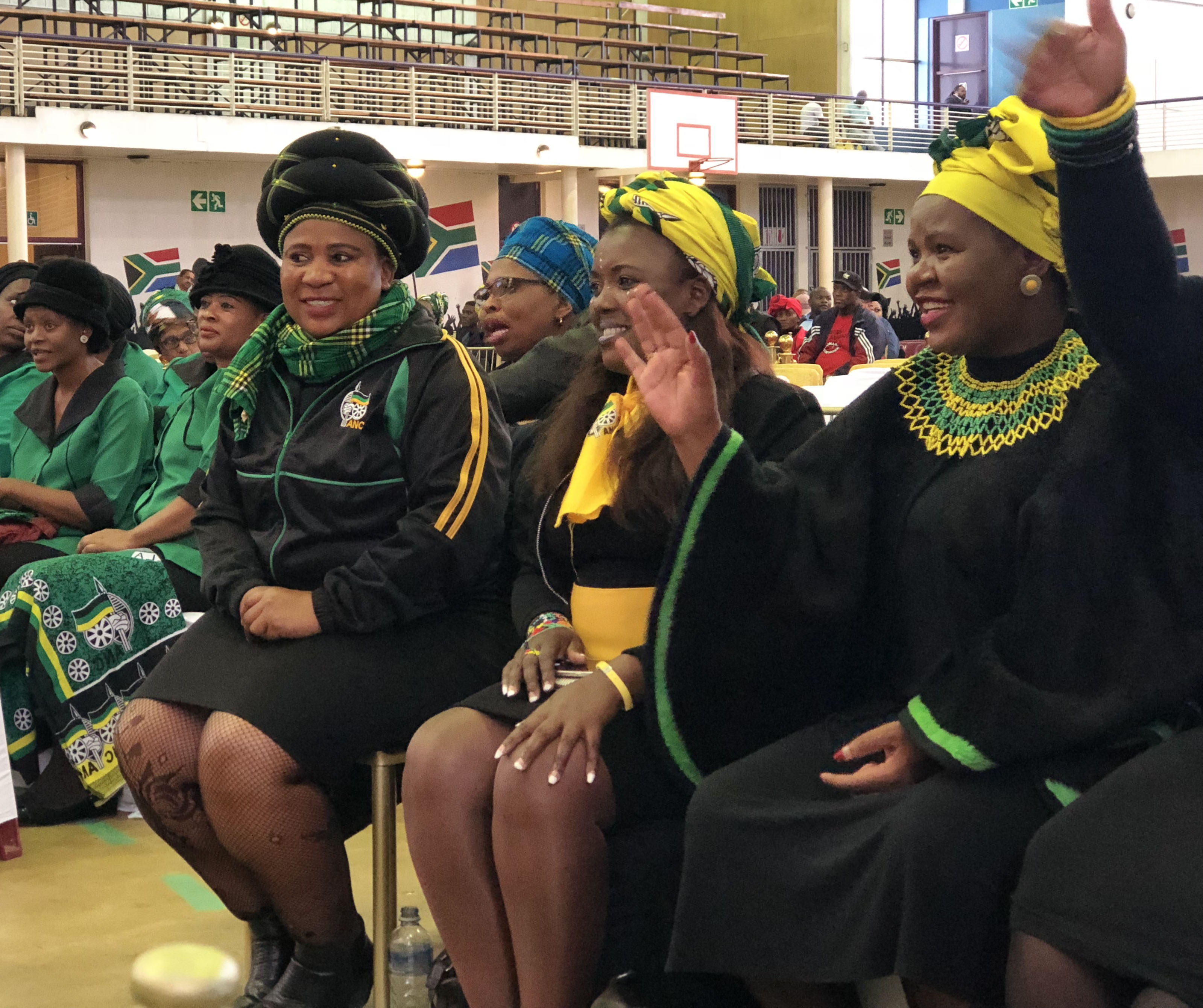Political clothing in South Africa doesn’t merely exist – it persists through political scandal, outlives politicians’ careers, and is available in any cut, size, and style you can dream of.
For visitors like myself, hailing from democracies with comparable electoral systems, the ample visibility of politicised clothing comes as a shock. These are not the freebie T-shirt handouts I’m used to. Here, I’ve seen the ANC logo emblazoned on to sports jackets, glitzy handbags and flip flops. EFF supporters are known by their headpiece, the “red berets”.
American political clothing, in comparison, falls short. Back in the US, a simple red baseball cap with four infamous words stitched across it have made the biggest political fashion splash that my home continent has ever seen. A baseball hat, of all things! Perhaps relatable to Donald Trump’s working-class following, but, objectively, it’s been done before; the Make America Great Again (MAGA) hats are, literally, old hat.
Even more telling is that now, as Trump sits almost half-way through his term, many of the manufacturers and distributors that partnered with him to produce Trump-branded items have backed out. If the “Sale!” label on Trump cologne is any indication, US political merchandise trends directly reflect the popularity of the individual in office – and a bad whiff has followed Trump into the White House.
Yet in South Africa, political clothing seems to represent a permanent, collective fan club of a particular party. It’s a kind of “rep your brand” that endures state-captured presidents and can be passed down from generation to generation. The long lifespan of South African political clothes isn’t just a result of trendiness, but also of relevance. Here, most political clothing doesn’t merely support a candidate, but rather advertises the party as an entirety.
At the ANC memorial for Winnie Madikizela-Mandela that I attended in Khayelitsha earlier this month, ANC Youth League member Mika Mahlaule lingered by the merchandise table.

Mourners attend a memorial service in honour of Winnie Madikizela-Mandelain the OR Tambo Hall, Khayelitsha, on Monday 9 April, 2018. Photo: Khamila Tom
“Here, it’s all about identification,” he explained. “Politics isn’t individual; its communal.”
Mahluale was, like all those around him, dressed in a dapper ANC-themed ensemble punctuated by a smart button-up with hints of green, black, and gold. His outfit simultaneously advertised his political allegiances and his fashionable taste.
“By linking clothes to fashion and making (ANC clothes) something you can wear to a party or to the club, you show people what party you’re with and people can identify with you,” Mahluale said.
Sure, American students will still occasionally wear a “feel the Bern” Bernie 2016 T-shirt to the local campus pub and Trump supporters like to take out their MAGA hats at trendy liberal hot spots to cause a stir. But American political clothing has lacked any trend-setting ability that lasts beyond a candidate’s campaign or term. After all, US political clothing is almost always emblazoned with the name, slogan, and logo of an individual candidate so party affiliation can only be gleaned by discreet colour choices or symbolism. As a result, the clothing becomes irrelevant once the candidate does.

Customers browse the informal market for ANC regalia outside Nasrec in Gauteng during the ANCs 54th national elective conference, 17 December 2017. Photo by Leila Dougan
Furthermore, while the ANC’s colours – black, green, and gold – have distinct meanings relevant to the South African people and the EFF’s red marks a proud association with the political left, American party colours stem from a particularly arbitrary decision: When television networks began displaying American election results through colour-coded red and blue maps, the trend quickly caught on within the parties themselves.
This contrast between South African and American political marketing is not just a cultural intrigue – it’s the manifestation of incredibly different paths to current democracy.
“Remember our history!” Mahluale told me. “We lost family and friends through apartheid. So, we are proud – proud to be associated with the party that led the struggle.”
The only major South African party whose fashion choices resemble those of American politics is the historically white DA. Some have even alleged that the DA has gone too far in mimicking American political campaigns, pointing to the uncanny resemblance between the DA’s “Vote for Change” slogan and Barrack Obama’s 2008 “Change We Can Believe In” campaign.
In the run-up to the next election parties are likely to go into brand overdrive to win political support. Expect to see specially-branded ANC breakfasts hit the shelves – anyone for a bowl of Cereal Ramaphosa?
Back at my home, the only political merchandise I have ever owned was a pennant from Hillary Clinton’s 2016 campaign. It was the first election that I was old enough to vote in and my mom had ordered me the pennant so I could advertise my commitment to the cause.
But the irony of the pennant was that it only arrived after Clinton had already lost. I came home one evening to find the pennant sitting on my bed, a sad reminder of a dream that my mom and I had once both shared and both lost.
I quickly stuffed the pennant away. Now, as I’m struck by the visible communality advertised through South Africans’ political clothing, I think back to its dark blue hue and pleasing cursive script. In many ways, that pennant represents the contrast between a young democracy which has thoughtfully moulded itself for its people, and an old one which has forced itself, often thoughtlessly, upon them.
The pennant’s only meaningful reference to Clinton’s party, the Democrats, was in the background pattern of small white donkeys walking one behind another. The donkey symbolism comes from Democrat Andrew Jackson’s 1828 presidential campaign. His opponent called him a “jackass” and the name stuck.
Ah, yes, political branding rooted in name calling. There’s nothing more American than that. DM
Rebecca Redelmeier is on a study abroad programme with Round Earth Media.















 Become an Insider
Become an Insider